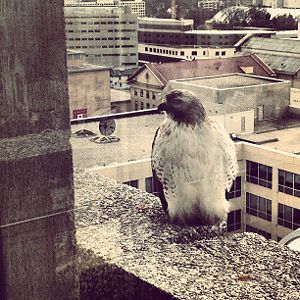Geometry and Topology Seminar 2019-2020
The Geometry and Topology seminar meets in room 901 of Van Vleck Hall on Fridays from 1:20pm - 2:10pm.
For more information, contact Tullia Dymarz or Alexandra Kjuchukova.
Summer 2015
| date | speaker | title | host(s) |
|---|---|---|---|
| June 23 at 2pm in Van Vleck 901 | David Epstein (Warwick) | Splines and manifolds. | Hirsch |
Summer Abstracts
David Epstein (Warwick)
Splines and manifolds.
Fall 2015
Fall Abstracts
Hung Tran
Relative divergence, subgroup distortion, and geodesic divergence
In my presentation, I introduce three new invariants for pairs $(G;H)$ consisting of a finitely generated group $G$ and a subgroup $H$. The first invariant is the upper relative divergence which generalizes Gersten's notion of divergence. The second invariant is the lower relative divergence which generalizes a definition of Cooper-Mihalik. The third invariant is the lower subgroup distortion which parallels the standard notion of subgroup distortion. We examine the relative divergence (both upper and lower) of a group with respect to a normal subgroup or a cyclic subgroup. We also explore relative divergence of $CAT(0)$ groups and relatively hyperbolic groups with respect to various subgroups to better understand geometric properties of these groups. We answer the question of Behrstock and Drutu about the existence of Morse geodesics in $CAT(0)$ spaces with divergence function strictly greater than $r^n$ and strictly less than $r^{n+1}$, where $n$ is an integer greater than $1$. More precisely, we show that for each real number $s>2$, there is a $CAT(0)$ space $X$ with a proper and cocompact action of some finitely generated group such that $X$ contains a Morse bi-infinite geodesic with the divergence equivalent to $r^s$.
Tullia Dymarz
Non-rectifiable Delone sets in amenable groups
In 1998 Burago-Kleiner and McMullen constructed the first examples of coarsely dense and uniformly discrete subsets of R^n that are not biLipschitz equivalent to the standard lattice Z^n. Similarly we find subsets inside the three dimensional solvable Lie group SOL that are not bilipschitz to any lattice in SOL. The techniques involve combining ideas from Burago-Kleiner with quasi-isometric rigidity results from geometric group theory.
Jesse Wolfson
Counting Problems and Homological Stability
In 1969, Arnold showed that the i^{th} homology of the space of un-ordered configurations of n points in the plane becomes independent of n for n>>i. A decade later, Segal extended Arnold's method to show that the i^{th} homology of the space of degree n holomorphic maps from \mathbb{P}^1 to itself also becomes independent of n for large n, and, moreover, that both sequences of spaces have the same limiting homology. We explain how, using Weil's number field/function field dictionary, one might have predicted this topological coincidence from easily verifiable statements about specific counting problems. We then discuss ongoing joint work with Benson Farb and Melanie Wood in which we use other counting problems to predict and discover new instances of homological stability in the topology of complex manifolds.
Matthew Cordes
TBA
Anton Izosimov
TBA
Jacob Bernstein
TBA
Yun Su
Higher-order degrees of hypersurface complements.
Archive of past Geometry seminars
2014-2015: Geometry_and_Topology_Seminar_2014-2015
2013-2014: Geometry_and_Topology_Seminar_2013-2014
2012-2013: Geometry_and_Topology_Seminar_2012-2013
2011-2012: Geometry_and_Topology_Seminar_2011-2012
2010: Fall-2010-Geometry-Topology
